Order unplaced Rank Species | ||
 | ||
Similar Dillenia, Dilleniaceae, Sphaerocoryne affinis, Dillenia philippinensis, Dillenia indica | ||
Dillenia suffruticosa fruits consumed by birds nov2014
Dillenia suffruticosa (Simpoh Ayer) is a species of Dillenia found in tropical South East Asia in secondary forest and swampy ground. It is a large, evergreen shrub to 6 metres high. It flowers continuously with yellow flowers 10 to 12 cm wide.
Contents
- Dillenia suffruticosa fruits consumed by birds nov2014
- Dillenia suffruticosa 25dec2015
- Lead section
- Description
- Distribution and Habitat
- Uses
- Taxonomy
- Synonyms
- References
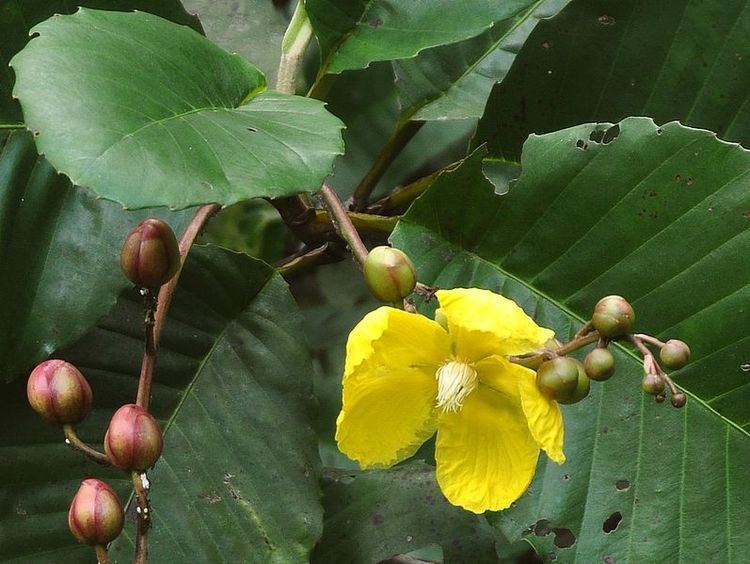
Dillenia suffruticosa is national flower of Brunei, and can be found everywhere across the country. In Singapore, the large oval-shaped leaves of this plant are commonly nicknamed as "CB (a Hokkien slang for the vagina) leaves", especially so by many Singaporean men who served in the army as part of the country's National Service (NS), as the base of the leaf (near the stalk) splits apart like the female reproductive organ.
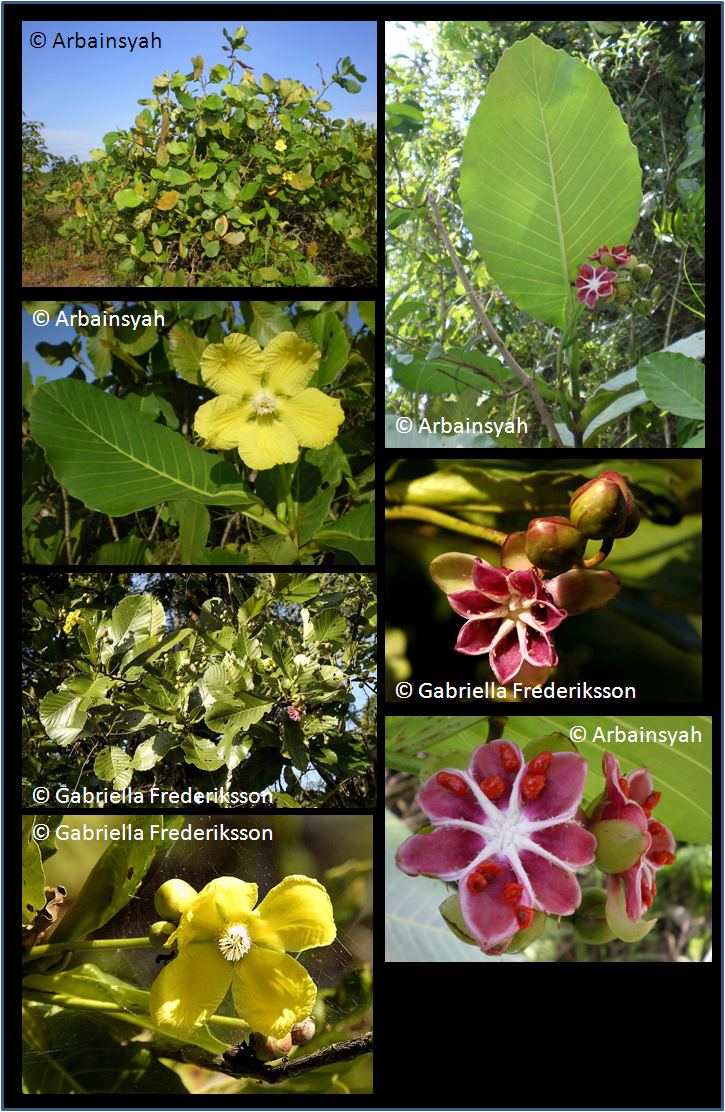
Dillenia suffruticosa 25dec2015
Lead section
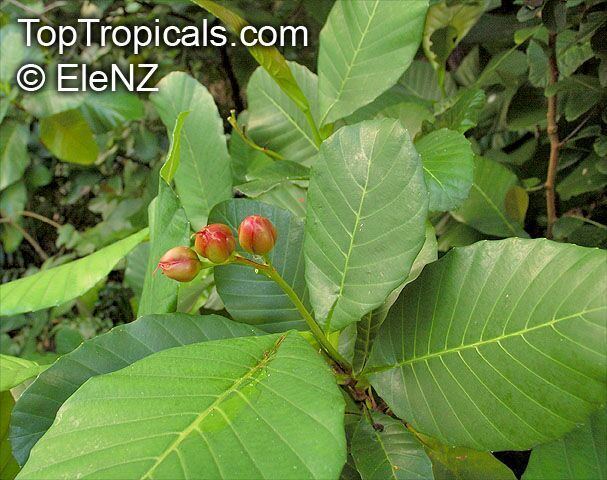
The plant Dillenia Suffruticosa is part of the genus Dillenia and the common name for this plant is Simoph Ayer. It is described as a large shrub that blooms during the day for its whole life cycle, which can be up to 50 years or longer.
Description

Dillena Suffruticosa is described to be a 6–10 meters long shrub, with alternate leaf pattern, simple, penni-veined, petiole winged along the whole stalk, blade-like 12-40x6-12 cm leaves, and a eudicot plant. The flowers are large, 10–13 cm wide, they are yellow in color and scentless. They are found on long stalks and face downwards and the plant doesn’t produce nectar. The flower blooms daily at around 3am and is fully bloomed one hour before sunrise. Other sources say (Corners) bees appear to be the pollinators that gather their pollen, as well as by small beetles and flies that scramble over the flowers, the flower moves in the appropriate position to prepare for fruit growth (pointing up when the flower starts to produce fruits, the fruits take up to 5 weeks to develop. The fruit is pink and is a star-shaped capsule with purple seeds that have a fleshy bright red aril. The fruits are eaten by birds and even monkeys.
Distribution and Habitat
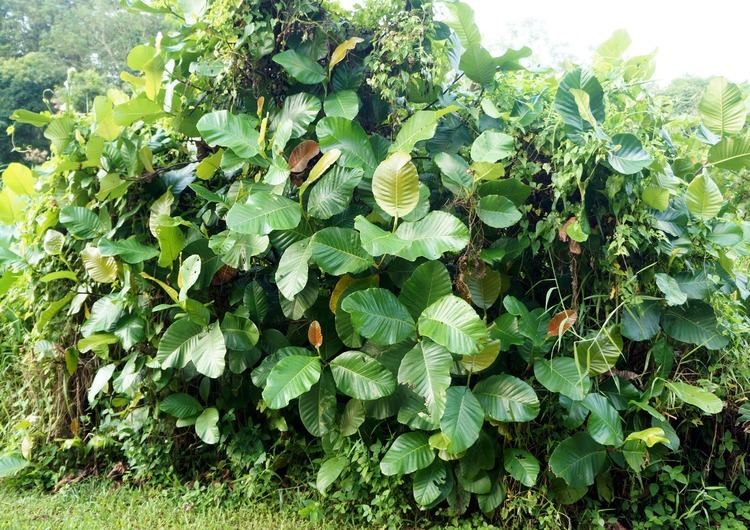
The plant is found in tropical South East Asia in secondary forest and swampy grounds that are undisturbed forest such as riversides up to 700 m altitude. They can also be found on alluvial places such as swamps, mangroves, riversides, but sometimes also present on hillsides and ridges, which have clayey to sandy soil texture. Dillenia Suffruticosa is also found in Sri Lanka, Peninsular Malaysia, Sumatra, Java, Borneo, in the tropics worldwide (Hawaii), and Singapore.
Uses
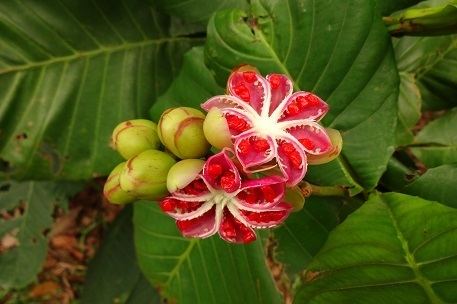
The Dillenia Suffruticosa has other uses, these include medicine and storage. The medicinal properties include the leaves and roots being used against inflammations, itch, stomach ache, and recovery after delivery.The storage properties consist of large leaves of the plant being used to wrap food (tempeh or fermented soy bean cake) instead of using a plastic bag and/or the leaves can be shaped into a cone to contain or hold food (rojak). Other uses are, they can be used to attract birds in urban areas and planted as an ornamental plant.
Taxonomy
Dillenia suffruticosa was discovered by Martelli in Malesia in 1886.
Synonyms
1) Dillenia burbidgei (Hook.f.) Martelli
2)Dillenia suffruticosa var borneensis Ridl
3)Wormia burbidgei Hook.f
4)Wormia subsessilis Miq, Wormia subsessilis var. borneensis Ridl
5) Wormia suffruticosa Griff
